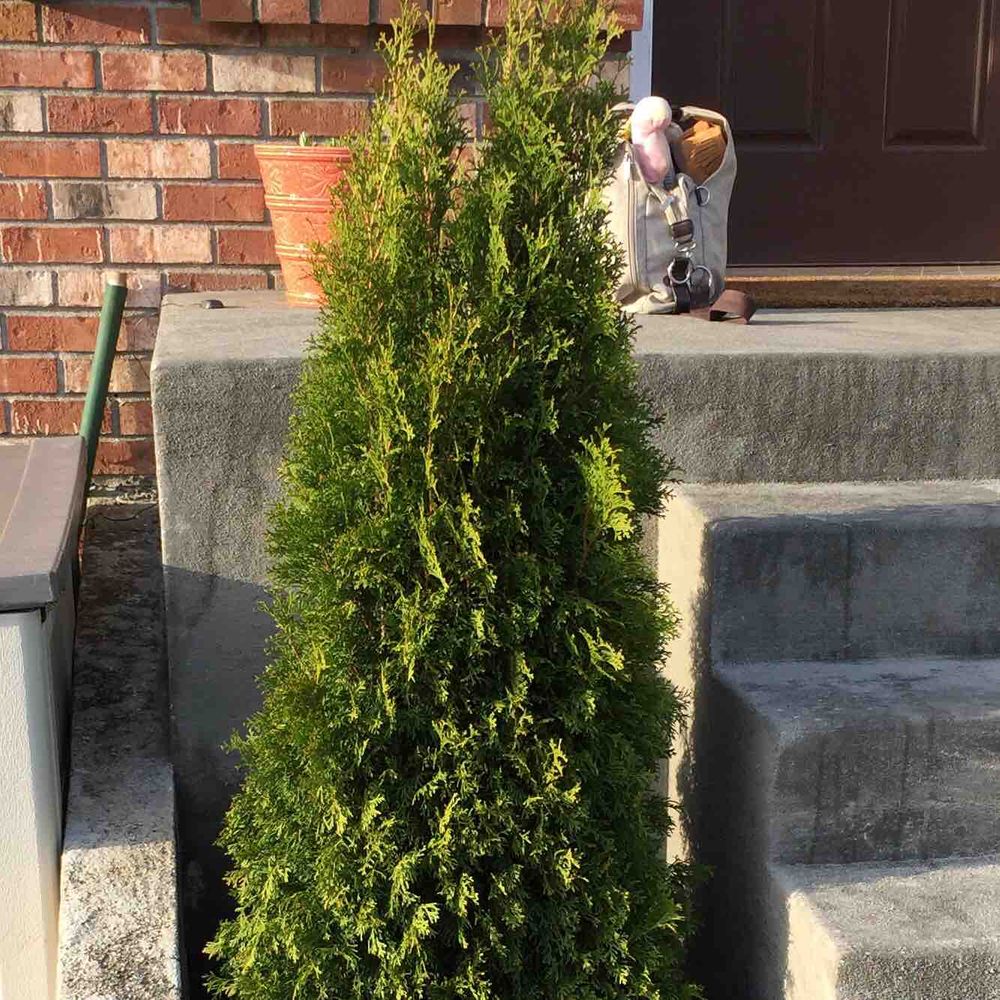Cedars
(Thuja)

Description
Thuja is a genus of coniferous trees and shrubs belonging to the family Cupressaceae, commonly known as arborvitae or white cedar. This genus is native to North America and East Asia, and is characterized by its evergreen foliage and distinctive conical or columnar growth habit. The name "Thuja" is derived from the Greek word "thuo," which means "to sacrifice" or "to fumigate," and refers to the use of these trees in traditional Native American and Chinese medicine. Description: Thuja trees and shrubs range in size from small, ornamental cultivars to towering forest trees. They have a conical or columnar growth habit, with dense, evergreen foliage that is comprised of scale-like or needle-like leaves. The bark of Thuja trees is reddish-brown and fibrous, with a distinctive stringy texture. The trees produce small, woody cones that contain winged seeds, which are dispersed by wind. The most commonly cultivated species of Thuja are Thuja occidentalis, or Eastern white cedar, and Thuja plicata, or Western red cedar. Eastern white cedar is native to eastern North America and is commonly used in landscaping for its ornamental value and as a hedge plant. Western red cedar is native to the Pacific Northwest of North America and is highly valued for its timber, which is used in construction and woodworking. Habitat and Distribution: Thuja trees and shrubs are found in a variety of habitats, including forests, wetlands, and rocky terrain. Eastern white cedar is native to the eastern half of North America, from Manitoba to Newfoundland in Canada and from Minnesota to Tennessee in the United States. Western red cedar is found in the Pacific Northwest region of North America, from Alaska to northern California. Cultivation and Uses: Thuja trees and shrubs are widely cultivated for their ornamental value, and are commonly used in landscaping as hedges, screens, and specimen plants. They are also used in traditional medicine and aromatherapy, and their wood is highly valued for its durability and resistance to decay. In landscaping, Thuja trees and shrubs are often planted as a hedge or screen, due to their dense foliage and conical growth habit. They are also used as specimen plants, particularly the dwarf cultivars, which are popular for container gardening and small gardens. Thuja trees and shrubs are used in traditional medicine and aromatherapy for their antifungal, antibacterial, and expectorant properties. They are also used in Chinese medicine to treat a variety of ailments, including rheumatism, asthma, and skin disorders. The wood of Thuja trees is highly valued for its durability and resistance to decay, and is used in construction, shipbuilding, and woodworking. The wood is also used to make pencils, shingles, and decorative carvings. Conclusion: Thuja is a genus of coniferous trees and shrubs that are valued for their ornamental value, traditional medicinal properties, and durable wood. The most commonly cultivated species are Eastern white cedar and Western red cedar, which are found in a variety of habitats throughout North America. Thuja trees and shrubs are popular in landscaping for their dense foliage and conical growth habit, and are commonly used as hedges, screens, and specimen plants. The wood of Thuja trees is highly valued for its durability and resistance to decay, and is used in construction, shipbuilding, and woodworking.
Taxonomic tree:







